Dissecting the Rev Soil Mix Step by Step:
After discussing organic growing indoors for so long, you start to come across a few things over and over again. I have a book on the shelf called TLO by the Rev. If you are reading this, then I’m guessing you have either read the book or have read his laundry list of a soil mix and were looking for more information on it. In my opinion, that book perpetuates many cultivation myths and then goes a step further and actually creates some myths of it’s own. Many of the amendments being used in the soil mix are ridiculous when you learn more. That’s why I wanted to list the entire list of ingredients and break it down line by line.
Please argue with me, I’m not writing this for my own good, but to create a conversation about where our amendments are coming from, and how we are growing our plants. My goal is to keep things as simple as possible, and to duplicate Mother Nature as much as I can while bringing organics indoors.
Base Mix:
2 gallons of quality organic soil mix
2 gallons thoroughly rinsed coir (coconut fiber)
2 gallons perlite(small nugget size)
2 gallons earthworm castings, and/or fresh compost works too)
While I don’t have a problem with the Base mix, I would be more specific here and do things differently.
1. What is the 2 gallons of soil look like?
2. Why Coco Coir? Check out this article from Utah State University on Peat Moss Vs. Coco coirhttp://cpl.usu.edu/files/publications/factsheet/pub__9468201.pdf[1]
(Although Leaf Mold would be Best, it takes 1 year to make at home and would be the way to eliminate all of this outsourcing)
3. Perlite Sucks – Seriously there are way better aeration amendments that don’t float around in the soil mix. Try lava rock, buckwheat hulls, rice hulls… the list goes on.
4. Hell Yes! I love Worm Castings and Compost.
This is what I recommend for a base mix, but think of it this way…. The base mix just has to have good humus and good aeration. Ideally you want the highest Cation Exchange Capacity possibly that way the soil will hold on to all the nutrients instead of letting them leach out with water. You can change the percentages and get almost the same results, but if you start to tweak things too much you will have a mix that is too heavy. You can grow in 100% worm castings, but the growth is slow with no aeration and too much compaction over time.
This base mix will perform very well and is also cheap to make.
30% Sphagnum Peat Moss or Home Made Leaf mold.
30% Homemade or Premium Worm Castings (Compost will suffice, but better be good compost)
25% Buckwheat hulls or Small Lava rock. Some form of aeration amendment. Perlite if you have to.
15% Topsoil – This will make it a real soil, and add clays that will increase Cation Exchange and also add a diverse amount of materials to the mix. I take a shovel and get some soil from a nice spot on my property, worst case you could find some good soil around town.
Or just straight 33/33/33 Peat/Compost/Aeration without the topsoil.
A note about Sphagnum Peat Moss: The Bales you buy at Home Depot in 2.0 Cubic Feet or 3.8 CF size are of a much higher quality than the sphagnum peat moss inside most of the bagged soil mixes you can buy. When you get bagged soil, they run the peat moss through a shredder, blender type deal and it gets really degraded. When you get a 3.8 CF bale from the store, you are getting something that hasn’t really been processed at all, just baled and shipped. It even has some micro life in it when you look at it under a microscope! Good Stuff!
Now for the fun part, all these crazy amendments, I’ll keep the list here and just go through it one by one.
Amendments according to the Rev 2.1 True Living Organics Soil mix.
1 and 1/2 cup Grow or Bloom "Pure" by Organicare (or 1 cup 5-5-5) Here are the ingredients for the Organicare: Fish meal, crab meal, sulfate of potash, alfalfa meal, composted poultry litter and seaweed (Ascophyllum nodosum). Why not just add these separate ingredients yourself at a known ratio and with your own personal quality control? Why are we using expensive bagged products along side with similar stand alone amendements? This makes no sense.
1/2 cup greensand Greensand takes Years to become available, if this is part of your really long term plan, that’s fine. This could be an initial amendment for starting a No-Till. There are other mineral amendments that will make themselves available to the plants faster. My goal when building a soil is not to waste money, and I would cut this out for sure.... but really see no harm in using it.
3/4 cup ground oyster shells (1 cup if no crushed oyster shells) Oyster Shells are about 95% CaCO3 or Calcium Carbonate. Once you realize that calcium carbonate is good, you can add it without having to be redundant. Gypsum, Crab, Oyster, they all have CaCO3 1cup crushed oyster shells (optional) Read the above.
1/2 cup dolomite lime (powdered) NO DOLOMITE LIME: As a rule, don’t use Dolomite lime, regardless of what you may have read in various gardening books, unless you are sure that you need Magnesium. (We don’t need any more magnesium in our mix, I promise) Dolomite is a high Magnesium limestone. Using dolomite will tighten the soil, reducing air in the soil and inducing anaerobic alcohol fermentation or even formaldehyde preservation of organic matter rather than aerobic decomposition. 1 and 3/4 cup prilled (pelletized) fast-acting dolomite lime Again, No Dolomite, it’s awful for your soil, especially with the alternatives available like gypsum.
1/4 cup blood meal Blood Meal: There are way better sources of Nitrogen than this. Blood meal is the blood waste from the cattle industry, Are you 100% confident that all the blood being used is free of any drugs, hormones, toxins etc? I'm not, and it turns out there is good reason to question the industry practice. Blood meal is made from dried blood that is literally scraped from the slaughterhouse floor. Even those farmers that use it admit that it is dangerous to breathe and can carry a number of harmful pathogens. Warning for animal lovers: Blood meal may attract your pets or other animals and if ingested can cause vomiting and diarrhea. Ingesting blood meal can also result in severe pancreatitis (inflammation of the pancreas) which is bad news for your pup.
1/4 cup high N bird/bat guano 12-8-2 N-P-K Bat guano is bad to breathe, and isn’t sustainable to harvest. It’s also not magic like the hippies of yesterday seem to think it was. There are many alternatives to Bat Guano, but I understand many people still use it and love won’t grow without it. That is a personal decision you have to make. Personally, I’ve found that Comfrey, SRP, and many others are better and less dangerous to use.
1/2 heaping cup feather meal
Antibiotics and other drugs found in feather meal samples. That should be enough to show you how convoluted the feather meal industry is. This is another waster product from slaughtering animals. Here is a quote from an article sited below: "To do this, they examined 12 feather meal samples from the U.S. (n=10) and China (n=2). All 12 samples contained at least one antibiotic residue, and some contained residues of 10 different drugs (both of those were from China). While many of the antibiotics were ones used in poultry farming (or their metabolites), they also found drugs they did not expect. Most significantly, this included residues of fluoroquinolones, which they found in 6 of 10 U.S. feather meal samples. Why is this important? Fluoroquinolone use was banned in U.S. poultry production as of 2005 because of the risk to human health–so where are these residues coming from?" Source:http://scienceblogs.com/aetiology/2012/04/05/waste-not-want-not-poultry-fea/
1 cup un-steamed granular bone meal (like Whitney Farms brand)
Why not use Fish bone meal, comfrey, soft rock phosphate or something better than bone meal? Bones are stripped, dried, and ground. It is used for its high phosphorus and calcium content despite the fact that bone meal is dangerous to breathe and has been suggested as an agent for spreading Creutzfeldt-Jakob disease (CJD) (the human form of bovine spongiform encephalopathy “mad cow disease”) to humans. “Do you feed your roses with bone meal? Not a good idea, says the world’s foremost expert on a group of rare diseases, found in animals, that sometimes make their way into humans. Breathing in the dust from contaminated bone meal could be deadly, says Dr. D. Carleton Gajdusek (GUY-doo-sheck), a brilliant Harvard Medical School graduate and Nobel laureate. In his latest book, Deadly Feasts (Simon & Schuster), author Richard Rhodes traces the history of these diseases, called spongi-form encephalopathies, that reduce the brain to a spongy mass, causing their victims to stagger, fall, develop dementia and paralysis, and soon die a terrible death.” - “Mad cow disease” from feeding your roses? – Medical Update September 1, 1997. Brown, Edwin W. Bone Meal can also be a danger to your pets. If an animal consumes a large quantity of bone meal (for their size) it will form a cement-like ball in their stomach, which may block the digestive track and need to be removed by surgery. http://gentleworld.org/whats-hiding-in-your-organic-fertilizer/
1/2 cup bulb food
WTF? Why are we adding chemical fertilizers now? Okay, so someone said he uses an organic bulb food. (I looked it up, it's just more of all the above)
1/4 cup powdered soft rock phosphate Good good, but ¼ cup for more than 1 cubic foot of soil? I don’t think that’s enough!
(Also, SRP does contain heavy metals, please use to start your mix but don't start going crazy with it)
1/2 heaping cup powdered gypsum Finally, this makes some good sense… but again, not enough, it should be about 4 cups!
1/2 cup kelp meal Awesome! Kelp Meal is incredible.
4 heaping cups composted steer manure (this inoculates your mix with specialized microbeasties and primo organic matter) Manure? Really? We can get said “microbeasties” without that crap. If this manure hasn’t been composted properly it still has residual amounts of antibiotics etc in it.
1/2 cup azomite granular (add an additional 1/4 cup of greensand if no azomite) Azomite I’m fine with. Good source of minerals, but don’t stress if you can’t get it easy, no need.
1 cup granular humic acid ore (such as Down to Earth brand) Humic Acids are NOT all created equal. I prefer Liquid Ful-Power. It is 10 times better. Read this interesting write up on the Humic industry. There is SOOO much bullshit being sold as “humic acid” it’s ridiculous. Please read this entire article before buying any!http://www.bioag.com/educationandresources.html
1 cup alfalfa meal (or 2 cups pellets- make sure pellets are all organic no additives) I love Alfalfa Meal! With all the other stuff going on in this mix I would cut it to ½ cup. Or leave it out of the mix and use it for making botanical teas with.
1/2 cup rock phosphate granular (optional) Soft Rock Phosphate is better. This won’t be as available and also may have slightly more heavy metals etc.
1 heaping cup organic rice (important for the good fungi in this soil mix) First the rice will absorb water, then rot and while rotting it’s going to take up N to compensate for the use of carbon. Eventually it will turn into something useful but it would be better to use the rice for making BIM cultures and then adding that to the mix. It just doesn’t make sense to add it to the mix directly. (Thanks to JayKush for this comment in my notes)
For what it’s worth, if anyone wants to discuss the ridiculous use of spikes and layers along with god awful “Nutrient Teas” that make absolutely no sense…. Than we can talk about that stuff too. But be prepared, because there is nor reason to shove spikes into the soil or to use even more nutrients in these crazy tea concoctions with doses of calmag etc.
Here is what I would use for amendments to keep it simple:
Neem Cake ½ cup per cubic foot.
Sea Kelp Meal ½ cup per cubic foot.
Crustacean Meal ½ cup per cubic foot.
Mineral Mix 4-5 cups per cubic foot.
Comfrey Leaf – Handful top dressed and then covered with worm castings.
Once in the container, mulch with straw or with a living mulch like clover.
Ideally, you can process your homemade worm castings with these ingredients and when the castings are ready for use, that will be all you have to add…. Not anything else! That would be really cool.
TL;DR
The Rev Mix isn't good and is too complicated. Understanding how to build a soil can be simple.
You only need good compost or worm castings and a few good soil amendments covering the NPK range. Add to that a complete lineup of minerals and you are done. You can source whatever is best locally and you don't have to use ANY set recipe. Just make sure you have Compost, Nutrients and Minerals. The part where people fail, is keeping the soil alive and full of microbes that can actually proccess the added minerals and nutrients fast enough to keep up with the plant. That is where the compost and/or compost tea comes in.
How did you evolve as a grower? Check out this Blog Post -->
http://buildasoil.com/blogs/news/12161769-survival-of-the-fittest-and-the-evolution-of-an-organic-gardener
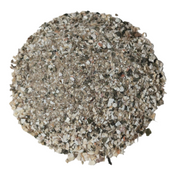
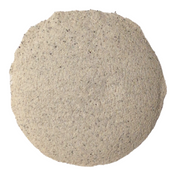
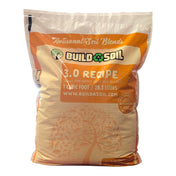
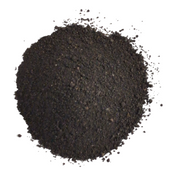
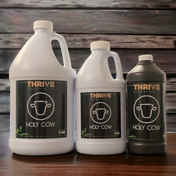
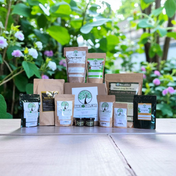
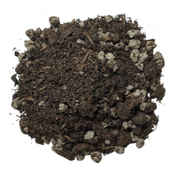
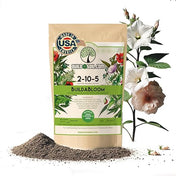
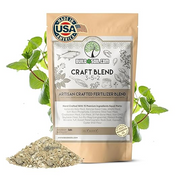
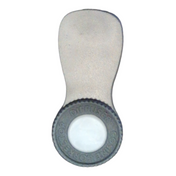
13 comments
yeah, Ill get back to it later, there a a very few things in the TLO book I disagree with, as Ive never gotten better results.. I make my own soil mix, dont follow his resipe, but I do use layering techniques which work f’ing awesome.. ill get more into it later.. but ussing laers and spikes, you’re actually giving the power back to that plant to decide what it wants, how much, and when.. I agree you dont need all the ingredients he uses, but many are great..
I also disagree agree w/ rev on greensand shit is awesome.. K, and more importantly silica.. I use pyrophylitic clay also, and azomite to have proper amounts of silica, secondary and trace elements, as they’re very important.
composted manure is good also.. I currently use guano as a high-N source opposed to blood meal, and agree w/ that, but they have steamed bone meal if your worried about any diseases from the bones. thats great stuff.
I agree with a lot of what you said though..
the other thing, is perlite is awesome, as long as its small perlite, i dont like large chunk, and it only floats on the top, very top, and thats if you dont mulch, which organic growers infdooors or out, should. that solves the floating perlite problem. your roots will grow around the perlite a lot easier than the lava rocks.
comfery isnt avail to everyone, as you usually have to grow it yourself… I prefer kelp for a good K source..
I totally agree w you , dolomite lime has FAR too much Mg, and you need Ca, but not that much Mg.
Theres many ways to go about organics, but as the other person said above, if you dont have pics to rival the rev’s results, its just words.
Ive tried many different organic methods, havent yet tried rice hulls, which I plan on, also trying to make some biochar in the near future, which is great for draineag, ans WAY ups your CEC.
Ill post more later, gotta go atm.
-peace
Hs
this is an amazing article! i know quite a bit and have been using coots formula..tweaked a bit..for a couple years now with amazing results.. but i just learned a bit more of the science behind the magic.
and make no mistake, kids. living organic soil is magical. grows the tastiest vegetables at the market! one run with your favorite strain and you’ll bee changed
Following myth-based gardening practices got the cannabis nutrient industry well fattened off the paradigm of chasing ph readings.
For decades.these companies and their sock puppets drained the wallets of unsuspecting home gardeners thinking they had to do,buy,and follow what these so called cannabis gurus said or their plants would die.
Well guess what,we went to school and learned from the soil and microbiology that inhabits it. These guy’s who pushed greensand for example,they were simply just wrong. The soil food web governs all processes…and it’s been doing so for thousands of years before humans came along and threw ‘thought’ at it.
What we have learned is that what we have been taught are mostly from a hydro-nutrient industry run over the uneducated for decades.
The ROLS/No-Till collective cannabis gardening methods popularized at IC mag,Roll It Up,etc,have all proved this time and time again. The last guy who came on gabbing about ph,Albrecht,brix,,etc….was like watching a train wreck compared to the simplicity that is the soil food web.
It’s about the actual life forms involved that inhabitant that biosphere,which happens to include the plant.
Gas
Amazing write up! SubDrool and Kushlady will hopefully read this and eat some humble pie!
“PSU on December 25 2013 at 08:52PM
Ha……..no sh!t coots has his own soil kit now. Big fan of his on the forums back in the day.
are going to start adding cover crops(seeds) in your catalog as a nutrient “accumulator” and green manure???doing some great work in here and appreciate your hard work to change growers minds from that synthetic “hold” over the industry atm.
hopefully I’ll get that invite into the forums here and I’m sure my friend hyroot would want in as well…. we have lots to talk about:P"
Hey PSU! Coot doesn’t have his own kit…. I just changed the marketing so it’s more clear. I got his approval to use his mix…. and so I want people to know that I didn’t invent the recipe… it’s CC’s mix for sure.
You should have received your invite to the forums by now, I hope it all works out well for you.
The CC Nutrient Kit works out to save over $100 easy as compared to just buying bags of soil at the dro shop.
If you have any questions just post them in the blog or please don’t hesitate to email me personally at Jeremy@BuildASoil.com
Thanks!
Ha……..no sh!t coots has his own soil kit now. Big fan of his on the forums back in the day.
are going to start adding cover crops(seeds) in your catalog as a nutrient “accumulator” and green manure???doing some great work in here and appreciate your hard work to change growers minds from that synthetic “hold” over the industry atm.
hopefully I’ll get that invite into the forums here and I’m sure my friend hyroot would want in as well…. we have lots to talk about:P
Hey Steve,
You should join the forums over at http://www.LivingOrganicSoil.org
That’s where all the organic people have been disappearing to lately.
It’s really private so there isn’t any info on the screen until you create an account and someone manually approves you.
Once in, they have stuff about every plant and every facet of soil and it’s really growing.
You would be an awesome addition to the member base.
If you use BuildASoil as a reference you’ll probably get approved through moderation faster.
Hope to see you over there in the soil forums.
Peace
Great information.
I have thousands of pounds of minerals and amendments landing this week or next depending on the weather. That means we will be making an update to our nutrient kit soon enough.
I also use Logan Labs, and really like their style. You remind me of someone I loosely know on the forums… anyways…. on to your soil mix.
The nutrient kit that I currently offer has very similar amounts of the key cations and the other difference is that I’m using rock dusts in the creation of my compost as well… so the nutrient kit is supposed to be something that anyone can use and then custom amend based on their situation… Nothing is a really a perfect kit in a box, but at least I know the results will be better than most are experiencing with the bottled nutrient regime.
I’ve been reading a lot about calcium lately, and while I agree with albrecht that it is a key cation, i’m not quite convinced that it is such an elusive element.
With the addition of the Glacial Rock Dust, the Oyster Flour, the Fish Bone Meal etc. I’m really excited to update out nutrient kit and also get really into some testing this spring.
I appreciate your feedback here, thanks for taking the time to write it all out.
While I absolutely love soil tests, and of course the paste test is an awesome, “while growing,” type of test… I can’t help but to feel like the soil tests are certainly missing a big portion of what is in there… and while not immediately available, the right soil life can really help. In the past, I would leave it at that, and just swear up and down that good worm castings and compost were the key to having the CEC buffer you need to win. But after learning much more, and also with a new frame of reference that is directed towards new gardeners, I have embraced the opportunity to have scientific data through soil testing to back up our claims.
This spring will be awesome, and if everything goes well, we will carry a nutrient kit that will create a balanced soil from readily available ingredients in most local markets. IE sphagnum peat moss bales and worm castings….. etc.
We will mix up several different small soil batches with the said nutrient kit… and then send in for soil tests a month later on all the mixes….. This could be a fools errand, but the potential to have a sustainable product that could assist new growers transition is to exciting! Not everyone get’s all weird on CEC like we do… and I don’t want that to be a barrier to entry to the whole organic scene.
I use Logan Labs for soil testing. What I have found with these super high organic mixes is that they tend to hold a lot more than the cec would suggest. This can be confirmed with their paste test (wish I could find a place to do tissue sampling). Anyways to a yard of 65% peat, 15% vermicompost and 20% grain hulls I am adding 10 lbs of Ca (I avoid going too high on SO4 because it causes leaching of anions), 4 lbs of P (all from soft rock), 20 lbs of kelp, 0.5 lbs of N (split between neem and alfalfa), 30 lbs of both zeolite and greensand (available but not soluble K…hard to find non soluble K), 20 lbs basalt, 10 lbs azomite, and some individual Mn, An, Cu, Co, Se, B and Mo and add some microbe food…dry molasses and humates.
Sounds like a lot I know…but paste tests half way through the season look great and EC never exceeds 0.6. Providing the plant energy with Ca and P is entirely different than providing it through the normal N and soluble K.
I am also a huge fan of foliars that jack up photosynethesis. I use the complete liquid feed from Nutrient Density Supply Company.
Here is the actual formula for a yard of soil…I have quit messing with coco coir completely though
Peat 55%
Humified Compost 15%
Coir 10%
Grain Hulls 20%
Lbs per cubic yard
Basalt 20
Greensand 30 (2.1 lbs K)
Hi cal lime 10 (4 lbs Ca)
Carbonatite 20 ( 4 lbs Ca)
Kelp 20 (0.2 N, 0.4 K)
Alfalfa 20 (0.6 lbs N)
Humates 20
Dry Molasses 20
Zeolite 30 (1.5 lbs K)
Cal-Phos 20 (4 lbs P2O5, 4 lbs Ca)
Dyna-min 10
K-mag 5 (1.1 K, 0.55 Mg, 1.1 S)
Mo ….0.14 grams/yard
Zn ……5.7
Mn …..8.4
Co …….1.1
Cu……..1.7
B ……..2.8
Fe…….2.8
It has been my experience that if you want to yield as well as hydro you have to push your soil EC (I use Hanna’s soil activity meter) up to 0.6. At that point you also start allowing the plant to store energy in the form of fat…which translates into much higher essential oil levels.
Obviously more than one way to skin a cat. But this is the way I skin it.
Hello Steve!
Thank you for the comments.
Greensand is fine, but I’d prefer to work with something else. I am currently having a new source of rock dust tested for paramagnetism and I will publish all of the results here if I end up using it.
The final goal will be full transparency and updates with soil and mineral tests available for download.
This spring we will be working on several mixes in bulk that will be tested and re-amended accordingly.
No doubt there is always room to improve, and I hope to use much of the results in product development.
Using a high percentage of worm castings and good compost has proved to be a very good buffer. The results have been very impressive. The Real ClackamasCootz mix is even lighter on amendments than our nutrient kit and will still perform well. It’s a matter of building the soil over time and starting off with a base mix that works well for everyone. I am constantly top dressing, using living mulch, and using compost tea’s etc.
I am learning more each day and the business will certainly be growing with me.
This week we will be making some small updates as we are receiving a new truckload of rock dusts, oyster flour, fish bone meal etc.
Do you have a soil recipe or recommendation that would be of assistance?
I would love to know more.
For the most part I agree with a couple of exceptions. Have you actually soil tested your Cootz based mix ? You will find, based on Albrecht numbers, it is low on Ca, P and many of the micros? It would seem that testing and adjusting the mix to actual Albrecht numbers would be a worthwhile effort.
And on Greensand I have to disagree…or agree with Rev. Glauconite breaks down into a ver y high energy (measured with Radionics) clay that eventually builds paramagnetic charge in your soil. It also provides K in a not soluble but available form (Albrecht from the 1940s) which I much prefer to the soluble K provided by comfrey, etc. I also like to use zeolite for the available but not soluble source of K.
Anyways,..no question this mix is superior to Rev’s…but why not make it much better? If you have tested it you know it does not completely fill cec sites.
You make a great point. We are currently working on a format that will include a thorough amount of photo’s and other supporting documentation.
In the Meantime, if you are curious about learning more you can always check out the private LivingOrganicSoil.org forums where ever single member uses a variation of these methods and it has been well documented.
http://www.LivingOrganicSoil.org
You make some valid arguments and I agree about the green sand. But if you are going to knock on the Rev’s teachings you better show some results that at least match his. Anyone can grow one pepper plant, lol………you know who your targeting with this Web site right?
Your in Colorado!…… so pics or it didn’t happen;-)